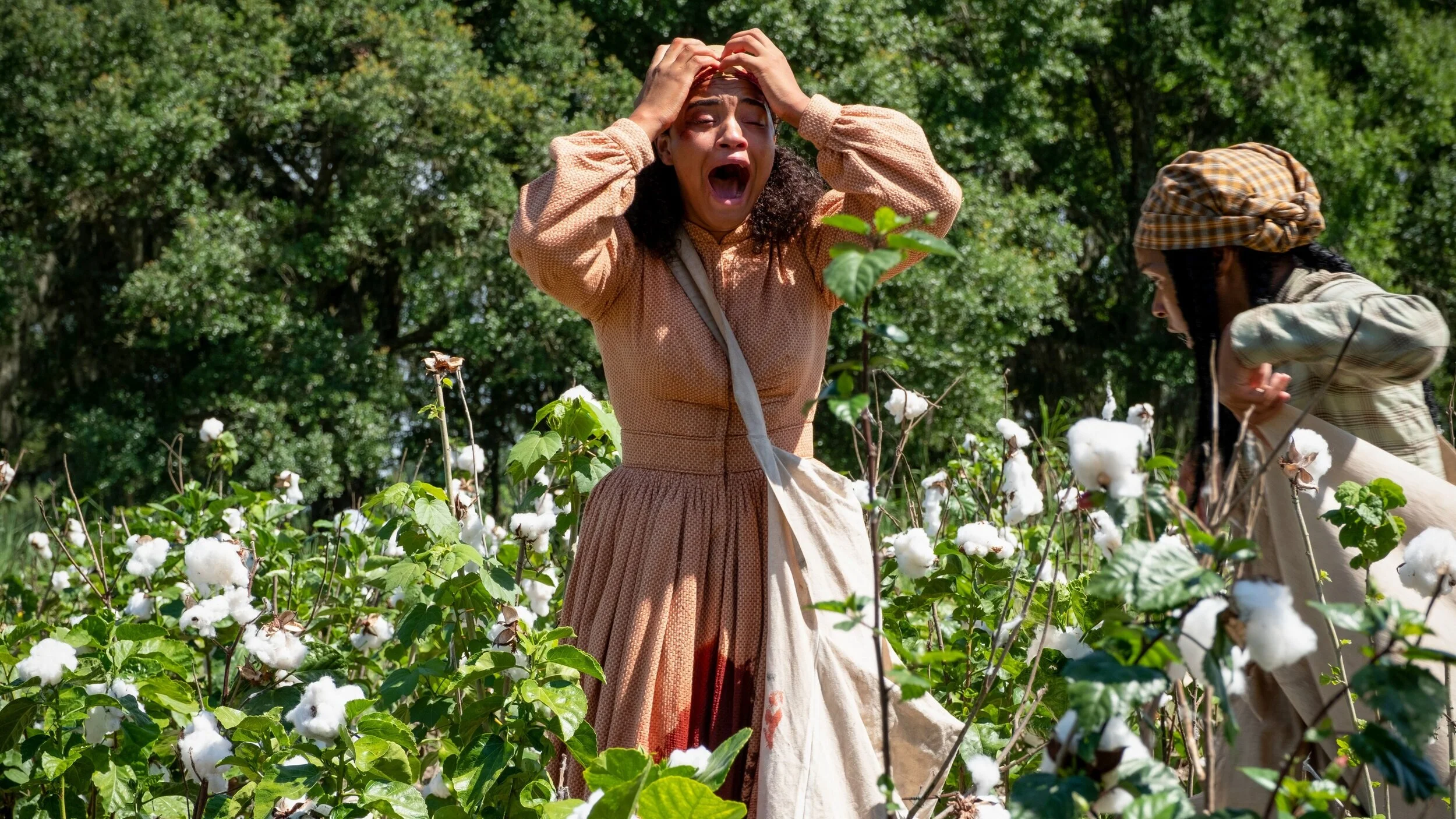Antebellum
On a cotton plantation in Georgia, life for the slaves is a living nightmare in an inventive scenario that turns the tables on the viewer.
Blood in the cotton: Kiersey Clemons and Janelle Monáe
The opening on-screen quotation is more relevant than most: “The past is never dead. It’s not even past.” Borrowed from William Faulkner's 1951 novel Requiem for a Nun, the sentiment is echoed throughout Gerard Bush and Christopher Renz's debut feature. ‘Antebellum’ itself, derived from the Latin for “before the war”, refers to the period in the Southern United States that stretched from the late eighteenth century up until the start of the American Civil War. Yet Bush and Renz’s film actually opens during the War, so the title is not entirely accurate. And the opening scene is problematic on a number of levels. It is a cliché of the Hollywood slave drama, right up to Steve McQueen’s 12 Years a Slave, which pretty much uttered the last word on the subject.
Here, we have a long, elegant tracking shot that sweeps down through Spanish moss before alighting on a stately Southern mansion captured in a blast of sun-dappled glory, with horses, no less, feeding on the front lawn. And the camera continues moving forward as a little girl in a yellow dress skips in front of us, stoops to pick some wild flowers and then greets her mother on the front steps. We are ushered around the building to be greeted by a line of Confederate soldiers. And so the shot continues, basking in the play of sunlight, tracking through a giant marquee and revealing a quartet of crisply attired women hanging up sheets on a washing line. As the soldiers march past, the women stand to respectful attention and the camera glides on to show another soldier hoisting the Confederate flag. And the camera continues, without a cut, to reveal the shacks at the back of the plantation where various slaves are attending to their duties, before it arrests on the face of Janelle Monáe, who is strapped to the back of a horse. And, as she is unceremoniously dragged off her perch, we are guided towards a scene in which more soldiers are chasing after two fleeing slaves, all lit by the setting sun on the horizon. What follows is both horrific and inevitable. It is at once chocolate box kitsch and jarringly exploitative, dragging the viewer back to the days of such blaxploitation fare as Mandingo (1975) and its sequel Drum (1976).
But if it is uncomfortable viewing, it is meant to be. Here, every white character is a sadistic caricature, every slave a victim of unspeakable degradation. The slaves are not even allowed to talk to each other without permission, and the women are prostituted nightly by the men in uniform.
It should be stated from the outset that Antebellum is not an easy film to review without giving too much away. However, it might be pertinent to say that the story was conceived by Gerard Bush, inspired by a nightmare he had. And Bush is not only an African-American filmmaker himself, but the personal and professional partner of Christopher Renz, with whom he collaborated behind the camera and on the screenplay. And if the duo were looking for a conversation, they certainly got it. Besides exhibiting their natural flair for cinema (on the back of a number of video shorts), the couple shows the same kind of confrontational aesthetic established by Jordan Peele with Get Out – splicing urgent commentary with genre ‘entertainment’. Likewise, much of the racism displayed here is not just the out-and-out brutality depicted on screen, but a more casual, insidious and systemic kind which, at least for the viewer, is almost as unsettling. As Faulkner said, “the past is never dead,” a truism that is still only too real for black people everywhere. Here, even a half-hearted smile from a white woman feels like a slap in the face. And it is meant to. Indeed, the most interesting aspect of Antebellum is what is going on beneath the surface.
As the seemingly imperturbable slave called Eden, the singer-songwriter Janelle Monáe adds to an increasingly impressive body of work, following on from Moonlight, Hidden Figures, Harriet and The Glorias. But it is Bush and Renz we should look to for a most promising future. They are fearless filmmakers with the skill and the voice to forge some exciting, innovative cinema. And they’re good writers, too. A line like, “Our ancestors haunt our dreams to see themselves forward” is not to be dismissed lightly. Or how about, “Their arrogance is their greatest vulnerability – and our greatest opportunity”? Antebellum’s strength is its uniqueness. Stay with it – and be appalled.
JAMES CAMERON-WILSON
Cast: Janelle Monáe, Eric Lange, Jena Malone, Jack Huston, Kiersey Clemons, Gabourey Sidibe, Marque Richardson, Robert Aramayo, Lily Cowles, T.C. Matherne, London Boyce, Dayna Schaaf, Caroline Cole.
Dir Gerard Bush and Christopher Renz, Pro Raymond Mansfield, Sean McKittrick, Zev Forman, Gerard Bush, Christopher Renz and Lezlie Wills, Screenplay Gerard Bush and Christopher Renz, Ph Pedro Luque, Pro Des Jeremy Woodward, Ed John Axelrad, Music Nate Wonder and Roman Gianarthur, Costumes Mary Zophres, Sound David Esparza.
QC Entertainment/Bush+Renz-Lionsgate.
105 mins. USA. 2020. Rel: 2 April 2021. Available on Sky Cinema and Now TV. Cert. 15.


